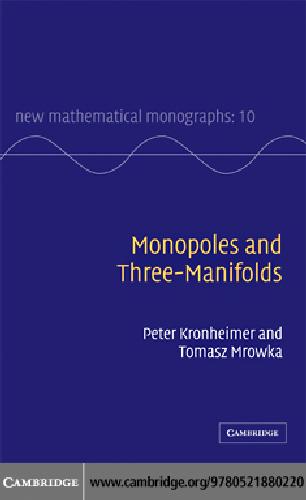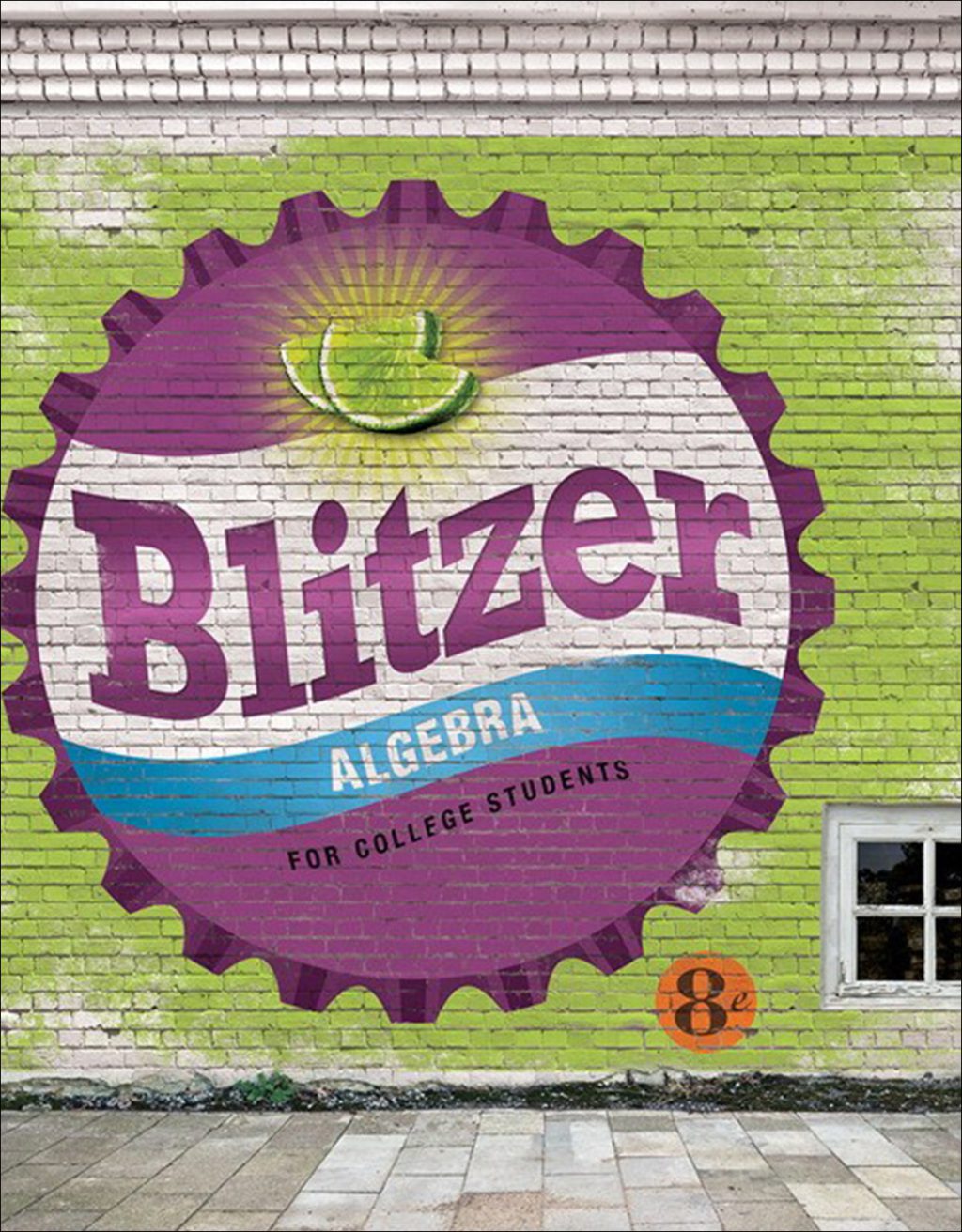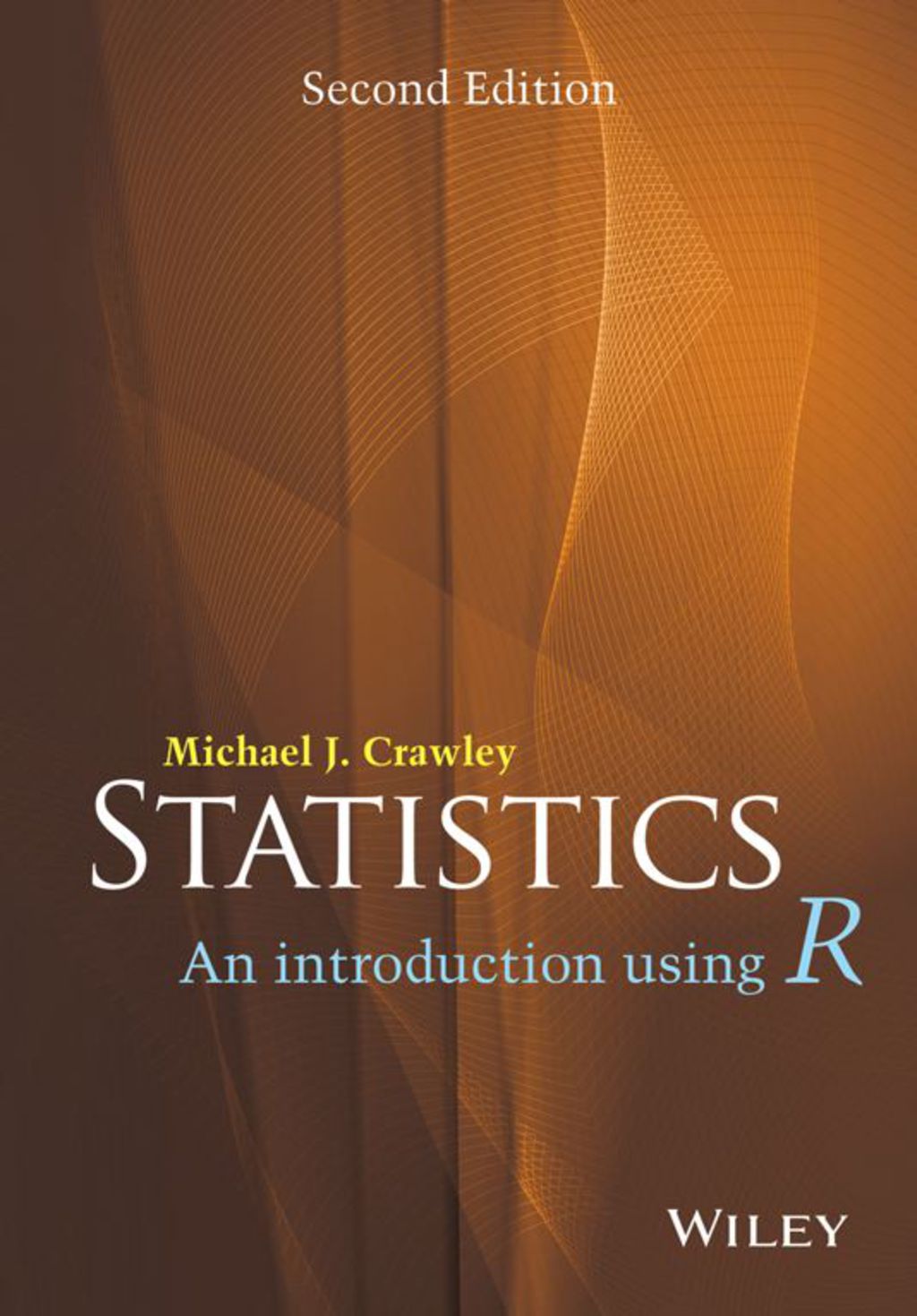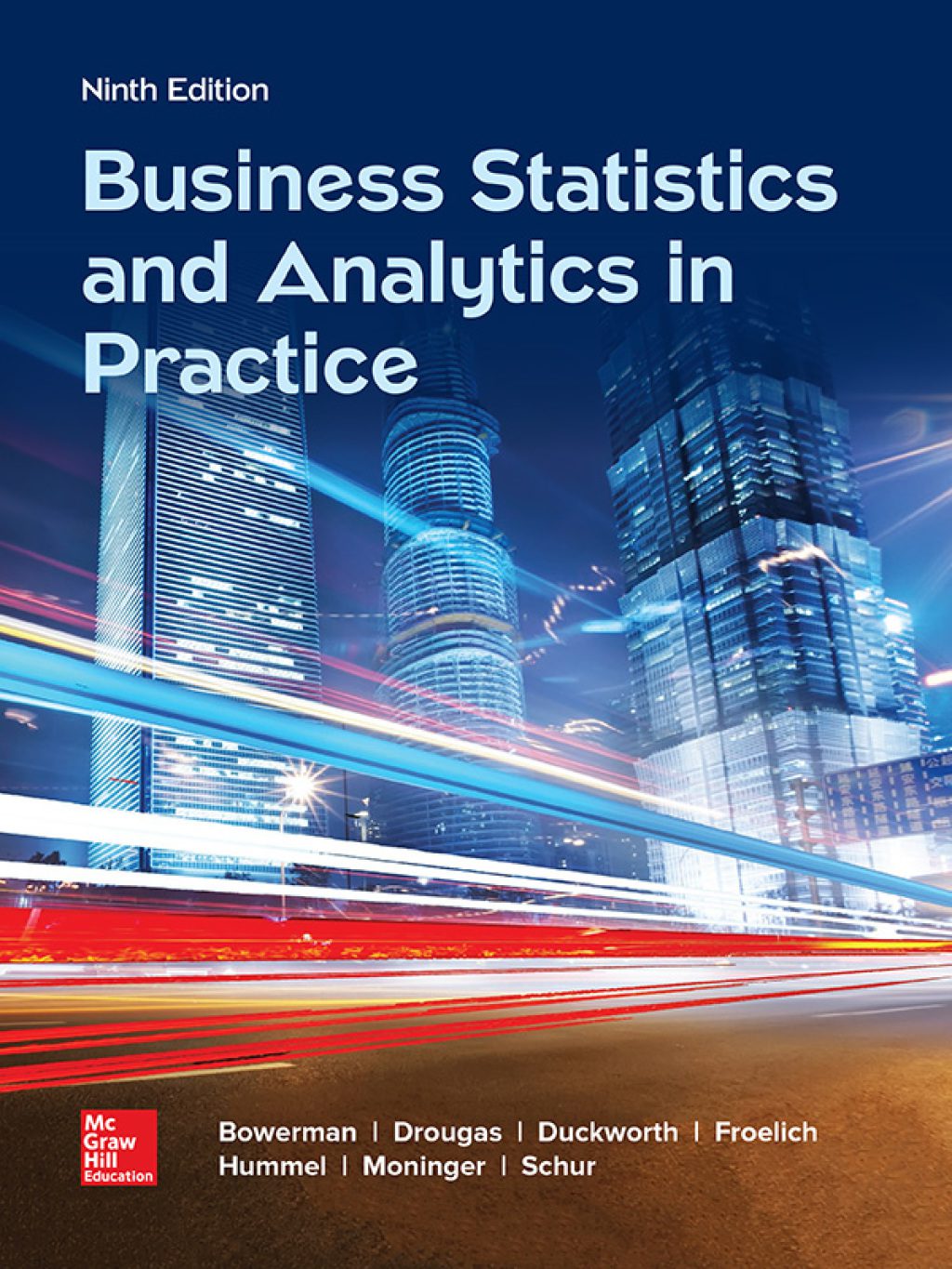Kronheimer P., Mrowka T.0511377339, 052188022X, 9780521880220
Table of contents :
Cover……Page 1
Half-title……Page 3
Title……Page 5
Copyright……Page 6
Dedication……Page 7
Contents……Page 9
Preface……Page 13
I Outlines……Page 15
1.1 Spinc structures……Page 16
1.2 Dirac operators……Page 19
1.3 The Seiberg—Witten equations……Page 21
1.4 Regularity……Page 23
1.5 Monopole invariants……Page 25
2 Morse theory……Page 28
2.1 The Morse complex……Page 29
2.2 Orientations and integer coefficients……Page 32
2.3 Linear flows on projective space……Page 34
2.4 Manifolds with boundary……Page 37
2.5 Circle actions and blowing up……Page 45
2.6 Comparison with the homotopy quotient……Page 55
2.7 Morse theory and local coefficients……Page 57
2.8 Functoriality in Morse theory……Page 59
3.1 Three flavors of monopole Floer homology……Page 63
3.2 Module structure……Page 68
3.3 The simplest example……Page 70
3.4 Cobordisms and functoriality……Page 72
3.5 Cobordisms with b+ positive……Page 77
3.6 Closed four-manifolds……Page 80
3.7 Floer homology with local coefficients……Page 83
3.8 Local coefficients and invariants of closed four-manifolds……Page 87
3.9 Non-additivity of b+……Page 89
3.10 The manifolds T3 and S1 × S2……Page 92
3.11 Simple vanishing theorems……Page 94
3.12 Other variants……Page 95
Notes and references for Chapter I……Page 96
II The Seiberg—Witten equations and compactness……Page 98
4.1 The Chern—Simons—Dirac functional……Page 99
4.3 The gradient flow and the four-dimensional equations……Page 102
4.4 Some notation……Page 105
4.5 Integration by parts……Page 106
4.6 Positive scalar curvature……Page 112
5.1 A compactness theorem……Page 113
5.2 Properness properties of the Seiberg—Witten map……Page 125
6.1 Blowing up……Page 126
6.2 The blown-up equations as a flow……Page 130
6.3 The tau model for the blow-up……Page 132
7 Unique continuation……Page 134
7.1 The linear case……Page 135
7.2 The non-linear case……Page 141
8.1 Statement of the compactness result……Page 144
Notes and references for Chapter II……Page 146
9.1 Completions of the configuration spaces……Page 148
9.2 Completion for the tau model……Page 151
9.3 The quotient configuration spaces……Page 152
9.4 Slices in the model……Page 160
9.5 The equations on the completion……Page 162
9.6 The global slice……Page 163
9.7 The homotopy type of configuration spaces……Page 165
10.1 Abstract perturbations……Page 166
10.2 Abstract perturbations on the blow-up……Page 169
10.3 The perturbed flow on the blow-up……Page 170
10.5 Tame perturbations……Page 172
10.6 Perturbations and integration by parts……Page 174
10.7 Compactness for the perturbed Seiberg—Witten equations……Page 176
10.8 Unique continuation for the perturbed equations……Page 179
10.9 Convergence to reducible solutions……Page 181
11.1 Cylinder functions……Page 185
11.2 Cylinder functions and embeddings……Page 189
11.3 Gradients and Hessians of cylinder functions……Page 190
11.4 Estimates for perturbations on the cylinder……Page 195
11.6 Banach spaces of tame perturbations……Page 204
Notes and references for Chapter III……Page 208
IV Moduli spaces and transversality……Page 209
12.1 Non-degeneracy of critical points……Page 210
12.2 Non-degeneracy characterized……Page 211
12.3 Hessians……Page 216
12.4 Hessians on the blown-up configuration space……Page 218
12.5 Proof of transversality: the irreducible case……Page 227
12.6 Proof of transversality: the reducible case……Page 229
13 Moduli spaces of trajectories……Page 231
13.1 Definitions……Page 232
13.2 Sobolev spaces on the cylinder……Page 235
13.3 Statement of results……Page 237
13.4 Near-constant solutions on finite cylinders……Page 240
13.5 Exponential decay……Page 247
13.6 Asymptotics of solutions……Page 250
14.1 Translationally invariant operators on cylinders……Page 253
14.2 Spectral flow and Fredholm theory on cylinders……Page 258
14.3 Slices for the gauge-group action……Page 261
14.4 The linearized equations……Page 264
14.5 Regularity and boundary-obstructed trajectories……Page 273
14.6 The simplest moduli spaces……Page 276
15.1 Statement and proof……Page 279
Notes and references for Chapter IV……Page 286
V Compactness and gluing……Page 288
16.1 Broken trajectories and convergence……Page 289
16.2 Proof of compactness downstairs……Page 291
16.3 Proof of compactness upstairs……Page 296
16.4 Finiteness results……Page 299
16.5 The compactification as a stratified space……Page 303
16.6 Compactification of reducible trajectories……Page 307
17.1 Atiyah—Patodi—Singer boundary-value problems……Page 308
17.2 Commensurate projections……Page 317
17.3 Atiyah—Patodi—Singer boundary-value problems andgauge theory……Page 325
18.1 The motivating example……Page 331
18.2 Statement of the theorem……Page 337
18.3 An abstract gluing result……Page 339
18.4 Deducing the gauge-theory version……Page 351
19.1 Moduli spaces as fiber products……Page 357
19.2 Localized trajectories and centered trajectories……Page 364
19.3 Proof of the gluing theorem: the unobstructed case……Page 370
19.4 Gluing in the boundary-obstructed case……Page 380
19.5 The codimension-one strata……Page 385
Notes and references for Chapter V……Page 388
20.1 Discussion……Page 389
20.2 Determinant lines and direct sums……Page 391
20.3 Construction of orientation sets……Page 394
20.4 Orienting the moduli spaces……Page 405
20.5 Orientations and gluing……Page 407
20.6 Orienting moduli spaces of reducible trajectories……Page 415
21.1 Boundary multiplicities in stratified spaces……Page 419
21.2 Transverse open covers and Stokes’ theorem……Page 421
21.3 Computing boundary multiplicities……Page 423
22.1 The basic construction……Page 424
22.2 The exact sequence of the pair……Page 434
22.3 Gradings and cohomology……Page 438
22.4 The canonical mod two grading……Page 441
22.5 Duality……Page 442
22.6 Local coefficients……Page 457
22.7 The Floer homology of the three-sphere……Page 460
Notes and references for Chapter VI……Page 462
23.1 Metrics, perturbations and cobordisms……Page 463
23.2 Module structure……Page 468
23.3 Local coefficients……Page 471
24.1 Defining the moduli space……Page 475
24.2 Attaching cylindrical ends……Page 478
24.3 Moduli spaces as Hilbert manifolds……Page 480
24.4 Transversality and cylindrical ends……Page 485
24.5 Compactness: local results……Page 495
24.6 Compactness: broken trajectories……Page 499
24.7 Gluing……Page 507
24.8 Orienting moduli spaces……Page 515
25.1 Moduli spaces on cobordisms……Page 522
25.2 Orientations and cobordisms……Page 525
25.3 Chain maps……Page 527
25.4 Mod two gradings and cobordisms……Page 540
25.5 Exact sequences, duality, and conjugate spinc structures……Page 541
25.6 The module structure for S3……Page 548
26.1 Stretching a composite cobordism……Page 549
26.2 Proof of the composition law……Page 557
27.1 Invariants of closed four-manifolds……Page 565
27.2 Reducible solutions on cobordisms……Page 570
27.3 Definition of………Page 573
27.4 Closed four-manifolds revisited……Page 579
27.5 The wall-crossing formula……Page 583
28.1 Spinc structures, two-plane fields and complex structures……Page 595
28.2 Gradings and two-plane fields……Page 597
28.3 Torsion spinc structures……Page 600
Notes and references for Chapter VII……Page 603
29.1 Perturbations revisited……Page 604
29.2 Compactness and finiteness……Page 609
30.1 Floer homology in the monotone and balanced cases……Page 611
30.2 Floer homology in the general non-exact case……Page 612
31.1 Statement of results……Page 619
31.2 Proof of Theorem 31.1.1……Page 621
31.3 Proof of the remaining two isomorphisms……Page 629
31.4 Proportional period classes……Page 632
31.5 An exact sequence……Page 634
32.1 A generating function and a gluing formula……Page 636
32.2 Remarks on the generating function……Page 642
32.3 Proof of Proposition 3.9.3……Page 643
Notes and references for Chapter VIII……Page 647
33 Coupled Morse theory……Page 648
33.1 Self-adjoint operators and the infinite unitary group……Page 649
33.2 A model for the universal family……Page 659
33.3 Coupled homology in the absence of spectral flow……Page 664
34.1 The standard family over S3……Page 672
34.2 Families pulled back from the three-sphere……Page 674
34.3 Relation with twisted cohomology……Page 679
34.4 Families with spectral flow……Page 688
35.1 A general calculation of HM……Page 692
35.2 Local coefficients……Page 700
35.3 Examples……Page 701
36.1 Positive scalar curvature……Page 709
37.1 Perturbations of the Chern—Simons—Dirac functional……Page 713
37.2 The Floer groups with Z coefficients……Page 717
37.3 Local coefficients on the three-torus……Page 720
37.4 Other flat three-manifolds……Page 722
38.1 The smooth classification of elliptic surfaces……Page 725
38.2 Gluing along three-tori……Page 728
Notes and references for Chapter IX……Page 733
X Further developments……Page 735
39.1 Frøyshov’s invariant……Page 736
39.2 Frøyshov’s invariant with mod two coefficients……Page 741
39.3 The blow-up formula……Page 742
40.1 Dimension three……Page 747
40.2 Dimension four……Page 751
41.1 Taut foliations……Page 755
41.2 Taubes’ theorem……Page 758
41.3 Embedding three-manifolds in symplectic four-manifolds……Page 759
41.4 A non-vanishing theorem for Floer homology……Page 763
41.5 The unit ball of the dual Thurston norm……Page 769
42.1 Surgery and elementary cobordisms……Page 771
42.2 The exact sequence……Page 775
42.3 Mod two gradings in the exact sequence……Page 776
42.4 The exact sequence and local coefficients……Page 778
42.5 Floer homology and the Alexander polynomial……Page 779
42.6 Applications to surgery……Page 784
42.7 Fibered knots……Page 790
Notes and references for Chapter X……Page 792
References……Page 793
Glossary of notation……Page 799
Index……Page 806







Reviews
There are no reviews yet.